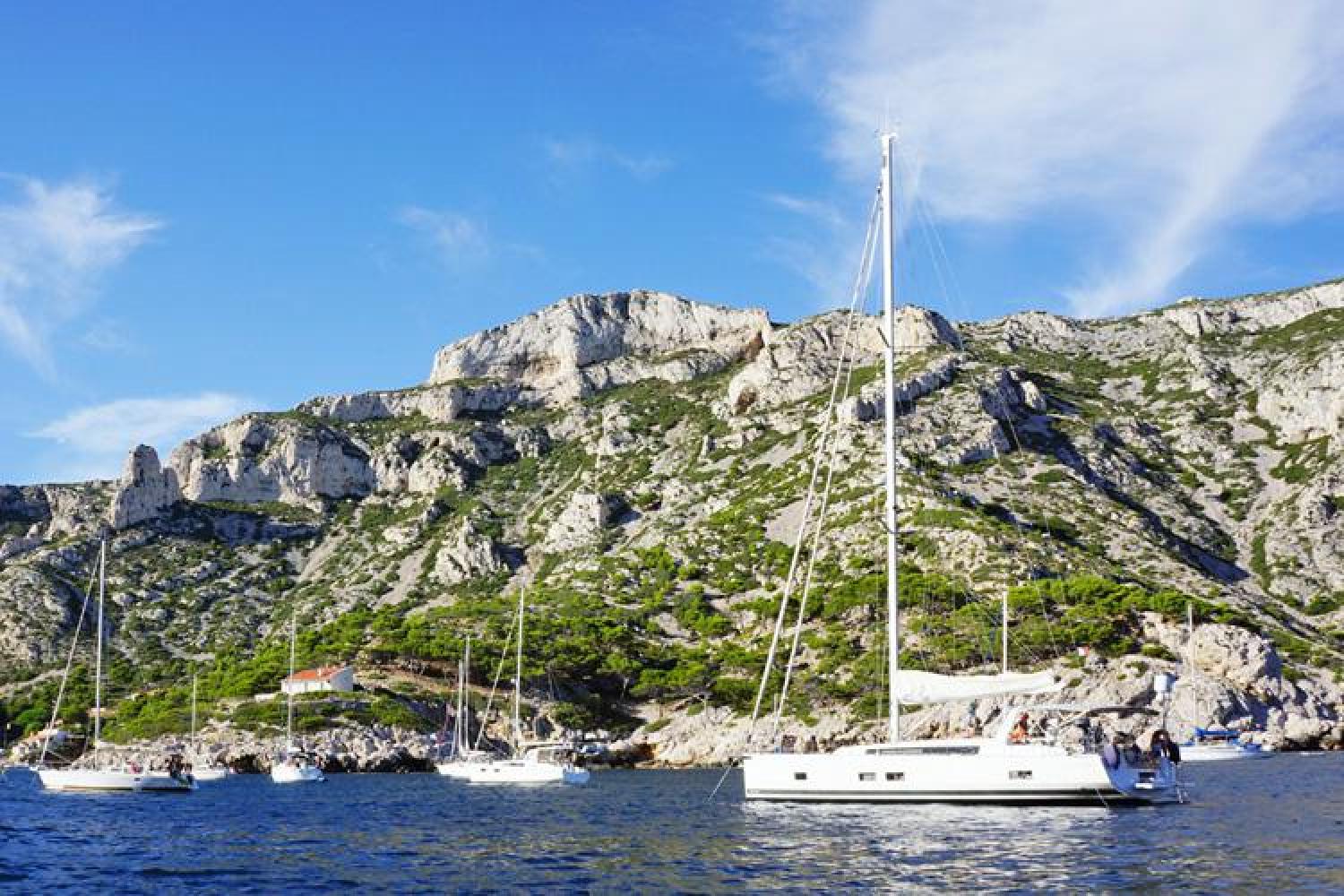Protecting the marine environment and organising water sports
What is a mooring strategy?
Part of the visitor strategy, the general mooring strategy is a reference document for the future of mooring in the Calanques for all nautical activities in the maritime area of the National Park, from Frioul to Saint-Cyr sur Mer. It aims to reconcile the development of nautical practices with the preservation of marine environments, coastal landscapes and the character of the territory. It is in line with the demanding objectives of preserving the neptune grass meadows, a key Mediterranean habitat, which was set in June 2019 by the Maritime Prefect.
49 concrete measures
This strategic document brings together 49 measures. It sets out a coherent framework for public action in terms of organising nautical activities throughout the National Park. This framework is intended to be both binding for the State and local authorities, but also legible in its objectives for the users of the marine areas of the Calanques National Park.
Among the "key" measures in the general mooring strategy are:
- seaward retreat (beyond the limit of the Neptune grass meadows) for the mooring of large ships (more than 24 metres long)
- the concentration of anchoring on sandy areas in several sites: around Le Frioul, around Pointe Rouge, to the north of Riou, in the Bay of Cassis and La Ciotat
- a change from free anchoring on the seagrass beds to compulsory anchoring on buoys, in sites where sandy areas are insufficient: west Pomègues, Sormiou, Morgiou, La Ciotat Bay
- a ban on all anchoring in the emblematic and already overcrowded Calanques of En-Vau and Port-Pin
- the prohibition of kayaks being pulled ashore at the bottom of the Calanques and the installation, as an alternative, of mooring stars
- the setting up of a mooring advisory board and a mobile and geolocalised tool to inform the public about the new regulations
Calendar for implementation
The measures in this strategy are to be implemented in two stages:
- from 2021 for the first measures: regulations relating to large vessels and the En-Vau and Port-Pin sites in particular
- by 2024 for the second stage: introduction of buoy anchoring zones and an end to anchoring on sea grass beds on the identified sites
The National Park will support the implementation of all the measures listed in the plan and, if necessary, will mobilise the public funding available for their implementation.
An emergency for the Neptune grass meadows!
Carbon storage, protecting the coastline against erosion, a fish nursery... the Neptune grass meadow is an irreplaceable habitat in the Mediterranean. However, its state of conservation is worrying... Over the last century, the surface area of the meadows has fallen sharply and even today regressions are observed more locally. This impoverishment is mainly the result of the removal of leaves and bundles of Neptune grass by boat anchors.
Online resource
General mooring organisation (in French)


 Video
Video Links
Links